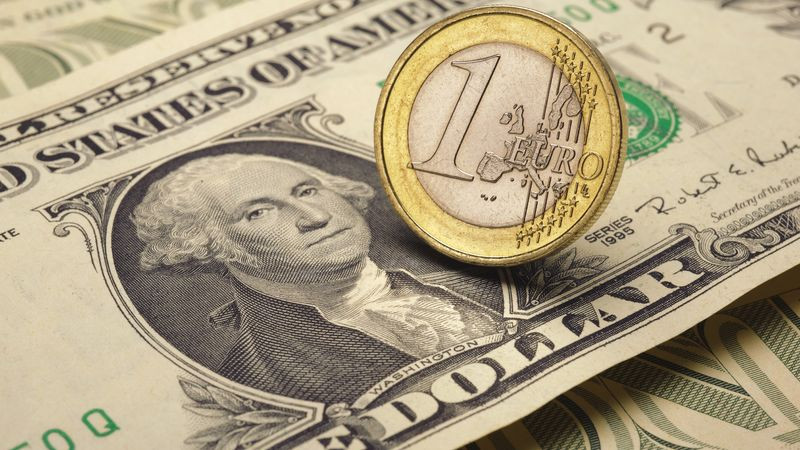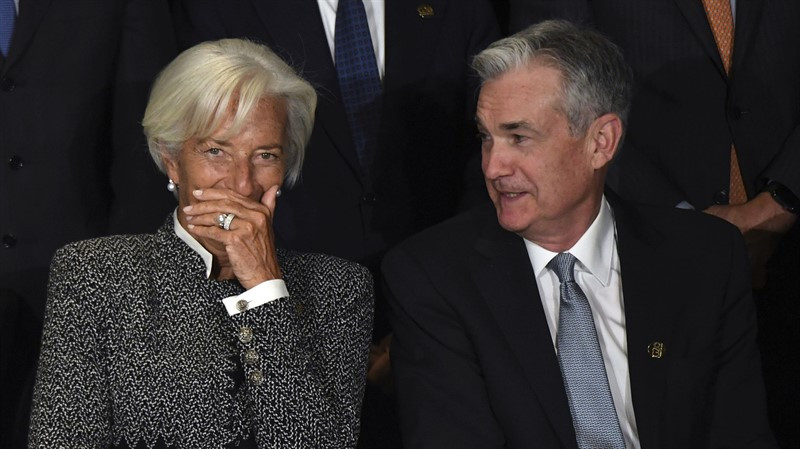
The EUR/USD pair has been in free fall mode since last Tuesday, coming close to the parity level.
The fact that there was no continuation of the rebound at the beginning of the new week, despite the "hammer" reversal figure that we saw on Friday, suggests that the main currency pair remains under strong pressure.
So far, the current downward trend remains in force, and it is worth waiting for more reliable signs of a reversal, rather than rushing to catch the "bottom".
Experts warn that the euro is still a falling knife, which is very dangerous to catch, despite the obvious oversold.
The EUR/USD bears returned to the game on Monday after a short respite.
According to the results of yesterday's trading, the euro fell in price against the greenback by almost 1.4% and finished around $1.0040.
The macroeconomic calendar on both sides of the Atlantic did not offer traders anything relevant.
Apparently, investors are in no hurry to open short positions on the dollar, believing that the US currency will help them save capital in the event of a recession in the global economy.
The main newsmaker on Monday was China, which published inflation data for June. The consumer price index in China increased by 2.5% compared to last year. At the same time, the producer price index increased by 6.1%.
These data once again reminded investors that the surge in inflation is global in nature.
The negative was also added by reports that 352 new cases of COVID-19 infection were detected in China on Sunday. The average number of cases last week exceeded 300 per day, which is the highest since May.
Market participants fear that an increase in morbidity will lead to a new wave of quarantine restrictions in China. This may negatively affect domestic demand and slow down the growth rate of the global economy.

Alarming news from China fueled interest in the protective greenback, which strengthened against its main competitors by more than 1% the day before and ended trading just above 108 points.
The demand for the dollar as a safe haven asset, combined with an unexpected increase in US employment figures for June, probably contributed to the latest surge in longs in USD, according to Maybank strategists.
Recall that the number of jobs in the US non-agricultural sector increased by 372,000 last month against the forecast of 268,000.
It is noteworthy that in response to the strong report on American employment, the key Wall Street indices showed a decline on Friday. In particular, the value of the S&P 500 for the day fell by 0.08% to 3,899.38 points.
The fact is that the latest report on the US labor market turned out to be a double-edged sword.
On the one hand, it questioned the inevitability of a serious downturn in the American economy.
"A significant increase in the number of jobs in the non-agricultural sector of the United States casts doubt on the statements of many experts that the economy is heading for recession, and even more so is already in it," Capital Economics analysts said.
On the other hand, strong labor market data increased the likelihood that the Federal Reserve will not slow down the process of raising interest rates in the near future. Since the central bank doesn't have to worry about unemployment, it can focus on slowing consumer price growth.
"We are in an environment where the US central bank is going to continue raising interest rates, and the main market sentiment speaks of potentially growing recession risks," BlackRock strategists said.
The Atlanta Fed's GDPNow indicator now shows a decline in the US economy in the second quarter by only 1.2% against -2.1% last week, but this does not reassure market participants yet.

"The labor market is a lagging indicator of the state of the economy. The risk of a mild recession is still quite high," Northwestern Mutual Wealth Management analysts said.
Meanwhile, Atlanta Fed President Rafael Bostic expressed confidence that the US economy is strong enough to survive another big rate hike.
He pointed out that job growth has been strong, although higher interest rates have begun to slow growth in some sectors of the economy, such as housing construction.
"The current situation does not look like a recession," Bostic said.
According to him, the latest inflation data were not so encouraging.
When the May report showed a sharp jump in inflation in the US, destroying hopes that it had already reached its peak, Bostic supported a more significant increase in the interest rate (by 0.75%) at the June meeting, and now supports the same increase at the FOMC meeting on July 26-27.
The main intrigue lies not only in how much the US central bank will raise the rate at the next meeting, but in what its further actions will be.
If the central bank hints that very soon it will turn "swords into plowshares", this will become a serious driver for the growth of the US stock market.
Although the market is increasing expectations of a reversal to the bullish scenario or at least stabilization, the bears still see the possibility of a fall in the S&P 500 by another 10-15%.
US stock indicators ended Monday's trading with a decline, which was the highest in more than a week.
Thus, the S&P 500 sank by 1.15%, to 3,854.43 points, amid a new outbreak of coronavirus infection in China, as well as in anticipation of fresh data on American inflation.
In Macau, the world gambling center, to combat the COVID-19 outbreak, all casinos were closed for a week from Monday. All residents of the region are ordered to stay at home for at least five days.
"This is a nervous market. Everyone is focused on what the inflation data will tell us. China is also an important factor. And the closure of Macau has doused the market with cold water today," U.S. Bank Wealth Management analysts said.

Data on the growth rate of consumer prices in the United States will be published on Wednesday. It is assumed that inflation updated the 40-year record in June and reached 8.8% compared to 8.6% a month earlier.
If the rise in prices is more significant, in the region of 9%, then we should expect that the Fed leadership will consider the possibility of raising interest rates by 100 basis points at once, even if in the end they do not take such a step, analysts at BMO Capital Markets believe.
If the real numbers turn out to be lower than forecasts, risky assets, led by US stocks and the euro, will like it. In this case, we should expect a wave of weakening of the protective dollar and a retreat of the USD index to the area of 105-106.
A weaker consumer price index in the US may delay the potential fall of the EUR/USD pair to parity.
So far, the greenback is not thinking of slowing down.
The USD index rose above 108.40 on Tuesday, reaching its highest level since October 2002.
According to the strategists of MUFG Bank, the arguments in favor of strengthening the dollar remain convincing.
"Concerns about a sharper slowdown in global growth reinforce the relative appeal of the dollar as a safe asset, helping it rise to two-decade highs. USD is also helped by the appeal of higher rates in the US. The Fed is sticking to plans to accelerate rate hikes to combat the risks of rising inflation," they said.
"The main risk for our bullish view of the US currency in the near future will be the release of tomorrow's CPI report on the United States, which may be much weaker than expected," MUFG Bank added.
ING economists believe that the USD growth potential remains, and it can continue its run to the 110 mark.
"Despite the prolonged rally, the probability that the greenback will continue to attract bulls in the coming days continues to outweigh the chances of a correction. Of course, it is impossible to exclude the movement of USD in the coming weeks to 110," they said.
The bank notes that short-term spreads on rates continue to play against EUR/USD, as well as the atmosphere of risk attitude.
"The fall in global stocks by 10% and the expansion of spreads by 25 bp this summer will lead to the fact that the EUR/USD pair will be around 0.98. The expansion of spreads by 50 bp, if the Fed acts more aggressively or the ECB hawks soften, will cost the pair the 0.95 level. Do not expect a significant increase in EUR/USD this summer, as it seems that it is too early for the Fed's hawks to retreat," ING said.

On Tuesday, the euro fell against the greenback almost to parity ($1.0001) before recovering somewhat.
"The recent depreciation of the euro seems to have been largely caused by the market's overestimation of the potential for a more significant decline in economic growth in the eurozone, reinforced by energy problems, the military conflict in Ukraine, and doubts about the ECB's anti-fragmentation tool," Maybank analysts said.
Rising energy prices in Europe are causing serious concerns, since the largest gas pipeline through which Russian natural gas enters Germany has gone for annual maintenance, and it is expected that the supply of blue fuel will stop for 10 days.
Investors are concerned that the shutdown may be extended due to the conflict in Ukraine, which will further restrict gas supplies to Europe and lead to a recession in the eurozone economy.
Analysts interviewed recently by Bloomberg see a 45 percent probability of a recession in the eurozone in the next 12 months. A month ago, the chances were 30%, and before the start of a special military operation of Russia on the territory of Ukraine were 20%.
Meanwhile, the European Central Bank is facing the problem of fragmentation – the widening of the spread between the yields of government bonds of different eurozone members.
Over the weekend, the head of the central bank of Greece, Yannis Stournaras, said that the proposed tool to combat fragmentation may never be used if it is sufficiently impressive to restrain yields.
Bundesbank President Joachim Nagel, in turn, warned that it would be risky to interfere with risk premiums assigned by investors to bonds of countries with a high level of debt.
According to Nagel, the ECB will be in dangerous territory if it tries to anticipate the actions of the markets.
Meanwhile, the weak outlook for the European economy increases uncertainty about the ECB's plan to raise interest rates, first by 25 basis points in July, then by 50 basis points in September.
"At the moment, it seems that the euro does not enjoy much support. This is due not only to high gas prices, but also to the split within the ECB over how much they are willing to raise rates," said strategists at Standard Chartered.
"The Fed is expected to raise the rate by 75 bps this month, and its goal seems to be to move to neutral rates as soon as possible, while in the case of the ECB, this is rather an ambiguous message, given the concerns around gas supplies," they added.
Money markets on Tuesday reduced the likelihood of an ECB rate hike to 137 basis points by the end of the year from 145 bps on Monday amid concerns about a recession in the eurozone.
The movement of the EUR/USD pair to parity has caused speculation about ECB intervention, but sources close to the central bank told Reuters that it has no desire to intervene. The last time the central bank took measures to support the single currency was in 2000.
Although the high dollar exchange rate is a negative moment for the eurozone, it is still unclear whether the ECB will take active actions to limit such dynamics.

It is obvious that a significant increase in the cost of borrowing will hit the economies of southern European countries with a very high debt burden. In addition, high rates will contribute to a reduction in investment, as well as lending in the eurozone, which is highly undesirable in the context of recession risks, which are much higher for the eurozone than for the United States.
On Tuesday, the EUR/USD pair rebounded after touching new multi-year lows in the parity zone.
The current picture hints at corrective growth. Technical indicators have gone up sharply, but are far from confirming the intermediate "bottom". Bears can step aside and wait for a technical correction before returning to selling.
The initial resistance is located in the area of 1.0060-1.0070. Failure to move beyond 1.0120 (the 20-day moving average) may discourage the bulls and lead to a retest of the key 1.0000 barrier.
If this psychologically important level does not hold, the bears' next targets will be 0.9950 and 0.9900.
It seems that the question of when the euro will touch the parity mark against the US dollar is only a matter of time, Scotiabank strategists say. They believe that the EUR/USD pair can extend its fall to the 0.95 area.
"If the EU fails to replenish gas reserves sufficiently in the run-up to winter, we may see rationing of energy consumption and a reduction in industrial production in the eurozone. This will lead to an even greater reduction in household spending at high energy prices, which will lead to a recession in the region," the bank's analysts said.
"The development of events in the next few days around the probability of the shutdown of the Nord Stream-1 will determine the fate of the EUR/USD parity level, the breakthrough of which, in our opinion, is becoming more and more likely and may last up to 0.95," they added.
"A return to the previous (before the start of technical work) level of gas supplies may create a buffer for the euro away from parity, but high energy prices (and continuing risks from the supply side), as well as the relatively dovish attitude of the ECB should keep the euro under pressure, away from $1.05," according to the Scotiabank.





















